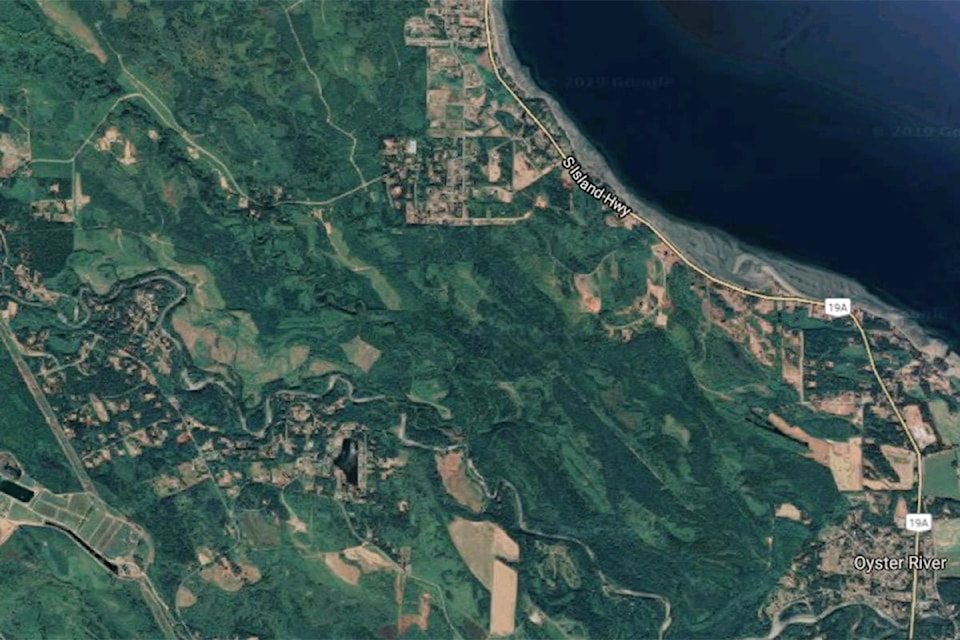A Campbell River woman escaped a bear attack with minor injuries in a wooded area south of Campbell River on Tuesday.
The BC Conservation Officer Service is leaving the animal alone, saying the bear was apparently a small sow trying to protect a cub from the hiker’s dog.
“We obviously don’t want animals running around that have a predatory interest in people,” said Inspector Ben York, conservation officer in charge of the west coast region.
“But if animals are behaving in a natural defensive way and we don’t believe there’s a risk of them continuing to show that behavior, obviously we’re not going to try and remove (them) from the population.”
A friend of the woman posted warnings about the bear on social media. She said the woman doesn’t want to be interviewed for privacy reasons.
The attack took place in private forests near the Oyster River around 10 a.m., according to the Conservation Officer Service.
The woman was on a trail south of Vaughn Road, about two kilometres into the bush, walking her dog – York said it was off-leash but well-trained – when she encountered a black bear weighing perhaps 150-200 pounds.
“She observed a small bear on the trail ahead of her, brought her dog in to heel, waited for the bear to move off into the bush, which it did, and then she proceeded down the trail,” York said. “Unfortunately the bear had not moved very far.”
The dog became excited and “got aggressive towards the bear,” which was in the nearby bush, and the dog returned towards her after the bear responded aggressively.
The woman blew her emergency whistle, yelled and threw sticks at the bear during a short encounter that ended when the bear stood on its hind legs and swiped at the woman’s face, York said. The bear then disengaged and returned to the bush.
The woman suffered minor injuries, receiving a few stitches for one of the claw marks on her face.
Within a few hours, a predator response team from the BC Conservation Office investigated, finding signs of bears foraging for roots, grubs and other natural food sources.
They posted signage at trail heads and near the attack site to caution hikers about the bear, and they placed trail cameras around the scene.
| The BC Conservation Officer Service provided this photo of bear alert signage after a woman was attacked by a small bear south of Campbell River on Tuesday. |
READ MORE: Campbell River man recuperating from harrowing grizzly bear attack
READ MORE: Photo of bear walking with hikers sparks warnings from B.C. conservation officer
VIDEO: Bear won’t be euthanized after biting toddler at B.C. zoo
Officers returned the next day to check the footage. Trail cameras didn’t capture images of the bear, but the officers found a small black sow with a cub near the scene of the attack, he said.
There was little or no forensic evidence to positively identify the bear, but conservation officers have a “high degree of certainty” the young sow was involved in the attack and was acting defensively.
“She tried very hard to push the woman and her dog away from the spot where they had the encounter,” York said. “It wasn’t like she was trying to attack and eat the woman.”
York added that otherwise no problems have been reported with bears in the area where the attack occurred.
He said the woman mostly did the right thing during the encounter, but he advised residents to avoid walking their dogs off-leash in forests since they commonly provoke bears and then come running to their owners, resulting in aggressive bear encounters.
He said hikers in the bush should carry bear spray and a low-pitched air horn, which can serve as a distress signal and also scare away an aggressive animal.
Whistles may attract bears because the high-pitched sound resembles that of small injured animals, York said.
During a bear encounter, the best course of action is usually to remain calm and try to slowly leave the scene, he said, adding that best practices vary depending on whether a bear is acting aggressively or defensively.
York added that conservation officers don’t want reports of common bear sightings in the woods, but aggressive or predatory animals should be reported to the RAPP hotline at 1-877-952-7277.
@davidgordonkoch
david.koch@campbellrivermirror.com
Like us on Facebook and follow us on Twitter
